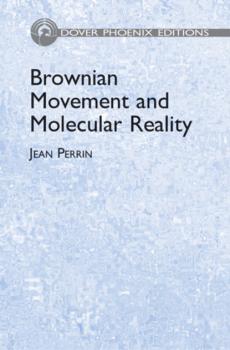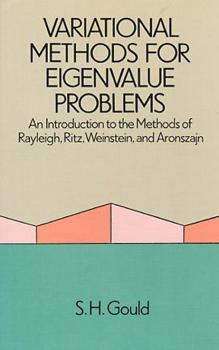Физика
Различные книги в жанре ФизикаRelativity in Illustrations
First formulated in the early years of the 20th century, Einstein's theories of relativity overturned long-held concepts of space and time. They provided a radically new way of looking at the physical world and explanations for many questions unanswered by classical physics. Unfortunately, many laypeople consider relativity so abstruse and complicated that they despair of ever understanding it. In reality, the ideas, although profound, are quite simple.That simplicity is strikingly illuminated in this delightfully nontechnical book, which explains relativity in a straightforward, carefully illustrated manner the intelligent layperson can understand. A little high-school geometry will enable the reader to follow the discussion. Moreover, the book includes more than 60 drawings to illustrate concepts more clearly than verbal explanations could ever do.Beginning with the questions «What is Time?» and «What is Space?» the author gradually introduces concepts from ordinary geometry needed to follow the development of Einstein's ideas. Having grasped this foundation, the reader is prepared to understand the specific nature and ramifications of relativity theory. To further increase comprehension, the book is planned so that the text and illustrations face each other on a two-page spread, making it easy for the reader to refer from the text to the illustrations.Clear, engrossing and well-balanced, this remarkably accessible treatment offers an ideal introduction to one of the most important physical theories of the 20th century. It can be read with profit by high-school and college students, teachers, scientists, or any reader fascinated by Einstein's epoch-making theories and their far-reaching implications.
An Elementary Treatise on Electricity
Albert Einstein characterized the work of James Clerk Maxwell as the «most profound and the most fruitful that physics has experienced since the time of Newton.» Max Planck went even further, declaring that «he achieved greatness unequalled,» and Richard Feynman asserted that «From a long view of the history of mankind — seen from, say, ten thousand years from now — there can be little doubt that the most significant event of the nineteenth century will be judged as Maxwell's discovery of the laws of electrodynamics.» Maxwell made numerous other contributions to the advancement of science, but the greatest work of his life was devoted to electricity. An Elementary Treatise on Electricity appeared at a time when very few books on electrical measurements were available to students, and its compact treatment not only elucidates the theory of electricity but also serves to develop electrical ideas in readers' minds. The author describes experiments that demonstrate the principal facts relating an electric charge as a quantity capable of being measured, deductions from these facts, and the exhibition of electrical phenomena.This volume, published posthumously from Maxwell's lecture notes at the Cavendish Laboratory — which he founded at the University of Cambridge — is supplemented by a selection of articles from his landmark book, Electricity and Magnetism. A classic of science, this volume is an eminently suitable text for upper-level undergraduates and graduate students.
Brownian Movement and Molecular Reality
How do we know that molecules really exist? An important clue came from Brownian movement, a concept developed in 1827 by botanist Robert Brown, who noticed that tiny objects like pollen grains shook and moved erratically when viewed under a microscope. Nearly 80 years later, in 1905, Albert Einstein explained this «Brownian motion» as the result of bombardment by molecules. Einstein offered a quantitative explanation by mathematically estimating the average distance covered by the particles over time as a result of molecular bombardment. Four years later, Jean Baptiste Perrin wrote Brownian Movement and Molecular Reality, a work that explains his painstaking measurements of the displacements of particles of a resin suspended in water — experiments that yielded average displacements in excellent accord with Einstein's theoretical prediction.The studies of Einstein and Perrin provided some of the first concrete evidence for the existence of molecules. Perrin, whose name is familiar to all who employ his methods for calculations in molecular dynamics, received the 1926 Nobel Prize in physics. In this classic paper, he introduced the concept of Avogadro's number, along with other groundbreaking work. Originally published in the French journal Annates de chimie et de physique, it was translated into English by Frederick Soddy to enduring influence and acclaim.
Hypersonic Inviscid Flow
This treatment of the branch of fluid mechanics known as hypersonic inviscid flow offers a self-contained, unified view of nonequilibrium effects, body geometries, and similitudes available in hypersonic flow and thin shock layer theory. Seeking to cultivate readers' appreciation of theory, the text avoids empirical approaches and focuses on basic theory and related fundamental concepts.Contents include introductory materials and chapters on small-disturbance theory, Newtonian theory, constant-density solutions, the theory of thin shock layers, numerical methods for blunt-body flows, and other methods for locally supersonic flows.Geared toward the needs of students and researchers in the field of modern gas dynamics and those of hypersonic aerodynamics, this text is appropriate for graduate-level courses in hyspersonic flow theory as well as courses dealing with compressible flow.
Microwave Spectroscopy
Two Nobel Laureates present a systematic, comprehensive account of the theory, techniques, experimental data, and interpretation involved in the study of microwave spectroscopy—a subject relevant to nuclear physics, molecular structure, chemical kinetics, quantum electrodynamics, and astronomy. The material in this volume is discussed critically, systematically, and in the simplest form. The simplicity of the wording and mathematics makes most of the contents accessible to those with a very elementary knowledge of quantum mechanics and atomic physics. Although the treatment is continuously developed, each of the 18 chapters is self-contained. Nearly 200 tables and figures augment the text. Appendixes supply most of the background for research and interpretation of microwave spectra; they also contain extensive data on nuclear and molecular constants, including essentially all those determined by microwave techniques. «Equally suitable for use as a fundamental reference or advanced textbook.» — U.S. Quarterly Book Review.
The Functions of Mathematical Physics
A modern classic, this clearly written, incisive textbook provides a comprehensive, detailed survey of the functions of mathematical physics, a field of study straddling the somewhat artificial boundary between pure and applied mathematics.In the 18th and 19th centuries, the theorists who devoted themselves to this field — pioneers such as Gauss, Euler, Fourier, Legendre, and Bessel — were searching for mathematical solutions to physical problems. Today, although most of the functions have practical applications, in areas ranging from the quantum-theoretical model of the atom to the vibrating membrane, some, such as those related to the theory of discontinuous groups, still remain of purely mathematical interest.Chapters One and Two examine orthogonal polynomials, with sections on such topics as the recurrence formula, the Christoffel-Darboux formula, the Weierstrass approximation theorem, and the application of Hermite polynomials to quantum mechanics.Chapter Three is devoted to the principal properties of the gamma function, including asymptotic expansions and Mellin-Barnes integrals. Chapter Four covers hypergeometric functions, including a review of linear differential equations with regular singular points, and a general method for finding integral representations.Chapters Five and Six are concerned with the Legendre functions and their use in the solutions of Laplace's equation in spherical coordinates, as well as problems in an n-dimension setting. Chapter Seven deals with confluent hypergeometric functions, and Chapter Eight examines, at length, the most important of these — the Bessel functions. Chapter Nine covers Hill's equations, including the expansion theorems.
Variational Methods for Eigenvalue Problems
The importance of eigenvalue theory in pure and applied mathematics, and in physics and chemistry, makes it incumbent on students to understand the various methods of approximate calculation of eigenvalues. It is especially important to develop such methods in a general and theoretical manner, if only to avoid missing opportunities for particular applications. This book does just that, approaching the topic from a purely mathematical standpoint.Because variational methods are particularly well adapted to successive approximation, this book gives a simple exposition of such methods, not only of the familiar Rayleigh-Ritz method, but especially of the related methods — the Weinstein method, Weinstein-Aronszajn method, and others. To make the book accessible to a broad range of students, little mathematical knowledge is presupposed beyond the elements of calculus. Where specialized knowledge is required — as it is in the discussion of direct methods in the calculus of variations and the theory of completely continuous operators in Hilbert space — the requisite material is developed in full.The first nine chapters, written in elementary style, discuss the general theory of variational methods with special reference to the vibrating plate. In the last chapter, the information gained thereby is extended, in a less elementary way, to more general cases. Exercises are provided throughout to illuminate the ideas and methods developed in the text.
Quantum Mechanics for Applied Physics and Engineering
This excellent text, directed to upper-level undergraduates and graduate students in engineering and applied physics, introduces the fundamentals of quantum mechanics, emphasizing those aspects of quantum mechanics and quantum statistics essential to an understanding of solid-state theory. A heavy background in mathematics and physics is not required beyond basic courses in calculus, differential equations, and calculus-based elementary physics.The first three chapters introduce quantum mechanics (using the Schrödinger equations), quantum statistics, and the free-electron theory of metals. Chapters 4 and 5 deal with the WKB approximation and perturbation theory. Chapters 6 and 7 focus on the periodic potential of a crystalline solid and electronic energy bands.To increase the effectiveness of the material as a learning aid, all developments are carefully worked out, complete details are given for each of the derivations, and successive derivations are developed on a firm basis provided by the preceding material. Throughout the text, examples from solid-state physics illustrate specific applications and demonstrate the principal results that can be deduced by means of quantum theory. Numerous problems (with selected answers), projects, and exercises have been incorporated to facilitate mastery of the text material.
Soap Bubbles
An excellent primer and the classic work on the topic of soap bubbles and films, this book employs simple experiments to establish a practical basis for the existence and function of surface tension and energy minimization. Dozens of experiments require nothing more than soap, straws, and bits of rubber, yet they impart profound and fundamental concepts relating to the science of fluids. Geared toward readers without much background in the subject, the book begins without difficult calculations and concludes with only the simplest equations. Lucid and concise experiments allow observers to formulate their own practical understanding of soap bubbles and provide a foundation for more serious studies. More than 80 illustrations complement the text.
What Is Relativity?
"An excellent introduction to complicated but fascinating subject." — Booklist.This compelling book offers readers with no technical expertise beyond arithmetic an enlightening tour of the paradoxes inherent in the special theory of relativity, guided by a pair of eminent theoretical physicists.Novel Prize physicist L. D. Landau and his distinguished colleague G. B. Rumer, employ a simple and straightforward manner to illuminate relativity theory's more subtle and elusive aspects. Using such familiar objects as trains, rulers, and clocks, the authors explain the reasoning behind seemingly self-contradictory ideas in which the relative seems absolute, but the absolute proves to be relative. A series of playful cartoons highlights the authors' witty observations on the laws governing inertia, the speed of light, the relationship of work and mass, and other relativistic concepts."The exposition is masterful . . . a superb book." — New York Times Book Review.









